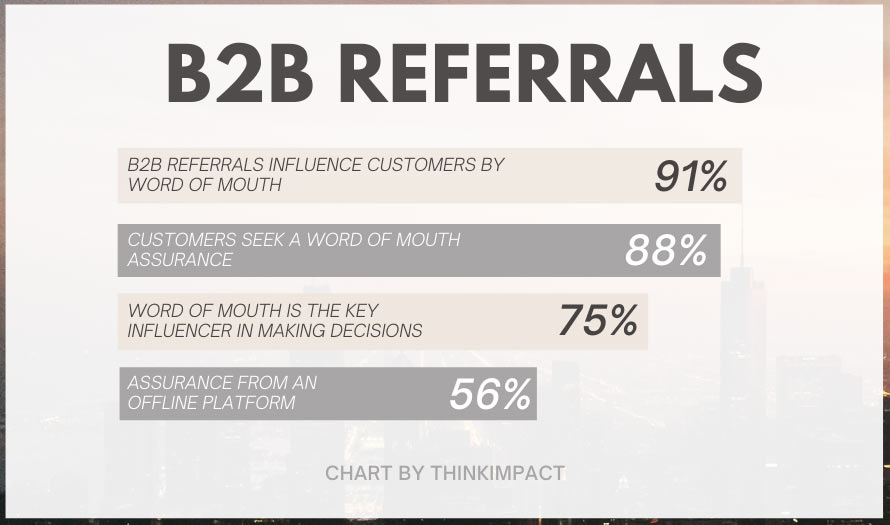
Shaping Brand Perceptions in B2B for Max Impact
Brand perception plays a crucial role in shaping customer decisions in the B2B world. The way a potential client perceives a brand influences their trust, and a staggering 81% of buyers say they must trust a brand in order to make a purchase.
In other words: Brand perception can make or break your ability to close deals.
The good news is that you can take specific steps to shape your brand perception and improve it if it isn’t where you want it to be today. In this article, we’ll tell you how. The sections that follow will cover the definition of brand perception, factors that influence it, and ways you can shape it intentionally to grow your brand.
Quick Takeaways:
- Brand perception is the collective beliefs, opinions, and impressions your audiences hold about your business.
- It impacts business in a number of important ways, including trust and credibility, differentiation, partnership opportunities, and customer loyalty.
- Brand perception can be positively or negatively influenced by product/service quality, customer service, marketing messaging, and thought leadership.
- It’s important to monitor brand perception continually and stay responsive to customer and audience feedback.
What is Brand Perception?
Brand perception refers to the collective beliefs, opinions, and impressions that audiences hold about a brand. In the B2B world, it mostly encompasses the image, reputation, and associations customers have with a company they buy from.
Brand perception impacts business success in a number of ways:
- Trust and credibility — We already know that without trust, buyers are unlikely to buy from a brand. A positive brand perception builds trust and credibility so buyers feel comfortable and confident making a purchase.
- Differentiation — Part of brand perception is how buyers view brands as compared to their competitors. Excellent brand perception can be a differentiator and factor in helping buyers choose your brand over others.
- Long-term Partnerships — Partnerships with industry peers can move your business strategically forward in a variety of ways (i.e. co-branding, co-hosting events, etc.). When your brand is perceived in a positive light, other brands will want to partner with you.
- Loyalty and Advocacy — In the B2B world, buyer decisions are overwhelmingly influenced by reviews and referrals—88% of buyers seek word-of-mouth referrals, and 75% say they’re the key factor in their ultimate decision.

Investing in brand perception, then—and knowing how to shape it—can play a major role in the success of strategic initiatives such as new product launches, entering new markets, scaling your business, and more.
Factors Influencing Brand Perception in B2B
Brand perception is built over time and influenced by a combination of factors, including:
- Product/service quality — How happy are current customers with your offerings? Do they solve customer problems and fulfill their intended purpose?
- Marketing — How do you market your business across important channels? Does your messaging resonate? Do your audiences engage with your content?
- Thought Leadership — Does your content showcase expertise that establishes you as a thought leader in your space?
- Customer Service — Do you provide quality customer service and support to your current customers?
As we’ll see in the next section, knowing and focusing on these key factors is an important part of shaping brand perception in your favor.
Strategies for Shaping Brand Perception
Create a Strong Brand Identity
Your brand identity encompasses your mission, values, and outward-facing messaging—in short, the way you present your brand to the world.
Developing a strong brand identity helps you keep your messaging clear and consistent, from your marketing materials to sales process to product delivery and customer support, so that every interaction you have with your audience is aligned with the way you want your brand to be perceived.
Use Storytelling and Brand Narratives
Even in the B2B world, buying decisions are emotional—a staggering 90% of decisions are made subconsciously rather than logically, meaning emotion plays an integral role.

To strengthen your brand perception, use storytelling and narrative messaging that resonates with audience emotions. Compelling stories that highlight your brand’s journey, successes, and positive impacts are more relatable than promotional marketing messaging, and they create more emotional connections with potential clients.
Establish Thought Leadership
Establish your reputation as a thought leader by creating content that showcases your areas of expertise. You can do this by covering important topics you have knowledge about, featuring subject matter experts from your organization, providing commentary on timely industry trends and events, and creating high-value educational content (like ebooks or whitepapers).
When you’re known as a thought leader, your customers and stakeholders see your brand as a reliable source of information and trust that you’re equipped to deliver effective solutions.
Share Customer Testimonials and Case Studies
In many ways, your customers shape your brand perception more than you do as actual brand representatives. Buyers look to your customers as a source of authentic first hand feedback, so making their reviews and testimonials visible and accessible can boost brand perception.
Ways to publicize reviews and testimonials include: publishing case studies and client success stories on your website, placing reviews on product pages, quoting testimonials in your content, and sharing them on social media platforms.
Personalize Buyer and Customer Experiences
Personalization isn’t a nice-to-have in B2B business anymore—it’s expected by clients whenever they interact with a brand. McKinsey research reports that three-quarters buyers now expect personalized experiences and become disappointed when they don’t receive them. This doesn’t just include current customers, either—your prospective buyers want personalization at every stage of their journey.
Leverage marketing automation to personalize your outreach, and use effective targeting to deliver relevant content and messaging to each of your customer segments. With your marketing, sales, and customer support teams, emphasize the need to recognize each buyer and customer as an individual, and be attuned to their unique needs.
Build Relationships through Networking and Events
Building your industry network is one of the best ways to create a positive brand perception that stands the test of time.
Keeping in mind that referrals, testimonials, and overall trust are so critical to buyer decisions, creating a generally positive perception of your brand strengthens the likelihood new business will come your way through word-of-mouth recommendations and similar channels.
Measuring and Managing Brand Perception
As you work to shape your brand perception, you must also track it to understand your progress and take appropriate strategic action. Let’s walk through a few effective tactics for measuring brand perception for implementing active ongoing management:
Tracking the Right KPIs
What metrics and KPIs do you use to track progress toward business goals? Looking at them collectively can help you understand how your brand is being publicly perceived.
If you’re doing everything right from a marketing and sales perspective, for example, but still struggling to engage new customers, you could be experiencing a brand perception problem.
On the other hand, a strong positive brand perception can be like a rising tide that lifts all KPI boats for your business.
Implement data-driven reporting processes and use tools like your CRM or business intelligence platform to streamline the way you use KPI data to shape brand perception.
Conducting Customer Feedback Surveys
Customer feedback surveys help you get straight to the source when it comes to understanding your brand perception.
Today, surveys are easier than ever to conduct on channels like email and social media, where your audience can complete them with a few clicks. Keep your surveys simple by including just a few questions and using multiple choice to standardize responses.
Collecting free-text qualitative data is okay, too, as long as you organize it well. Ideally, you can use brand sentiment analysis and text analytics tools to identify trends in freeform answers and analyze them in combination with quantitative data.
Monitoring Online Reputation and Social Media Sentiment
Brand sentiment analysis tools can also be used to monitor brand mentions on a larger scale and across platforms.
Comprehensive sentiment analysis gives you the most holistic perspective on your current brand perception and allows you to take quick action to either capitalize on positive press or quickly address PR issues that arise.
Making Adjustments Based on Feedback and Market Trends
In most cases, customers and other audiences are willing to forgive honest missteps and even overt mistakes—as long as a brand is listening and responding to feedback. Optimize your brand perception by staying responsive to insights and transparent about ways you’re improving.
Final Thoughts on Brand Perception
Brand perception plays a crucial role in B2B business success. It influences customer decisions, differentiates your brand from competitors, and long-term partnerships.
By maintaining a strong brand identity, telling compelling stories, acting as a thought leader, sharing customer testimonials, and building a strong network, you can shape your public brand perception to be one that continually delivers new opportunities and company growth.
At the same time, regular measurement, analysis, and adjustment based on customer feedback and market trends ensure the ongoing effectiveness of your brand perception strategies. By prioritizing brand perception, B2B companies can build strong, positive perceptions that lead to long-term success and growth in the competitive marketplace.
Michael Brenner is a keynote speaker, author and CEO of Marketing Insider Group. Michael has written hundreds of articles on sites such as Forbes, Entrepreneur Magazine, and The Guardian and he speaks at dozens of leadership conferences each year covering topics such as marketing, leadership, technology and business strategy.